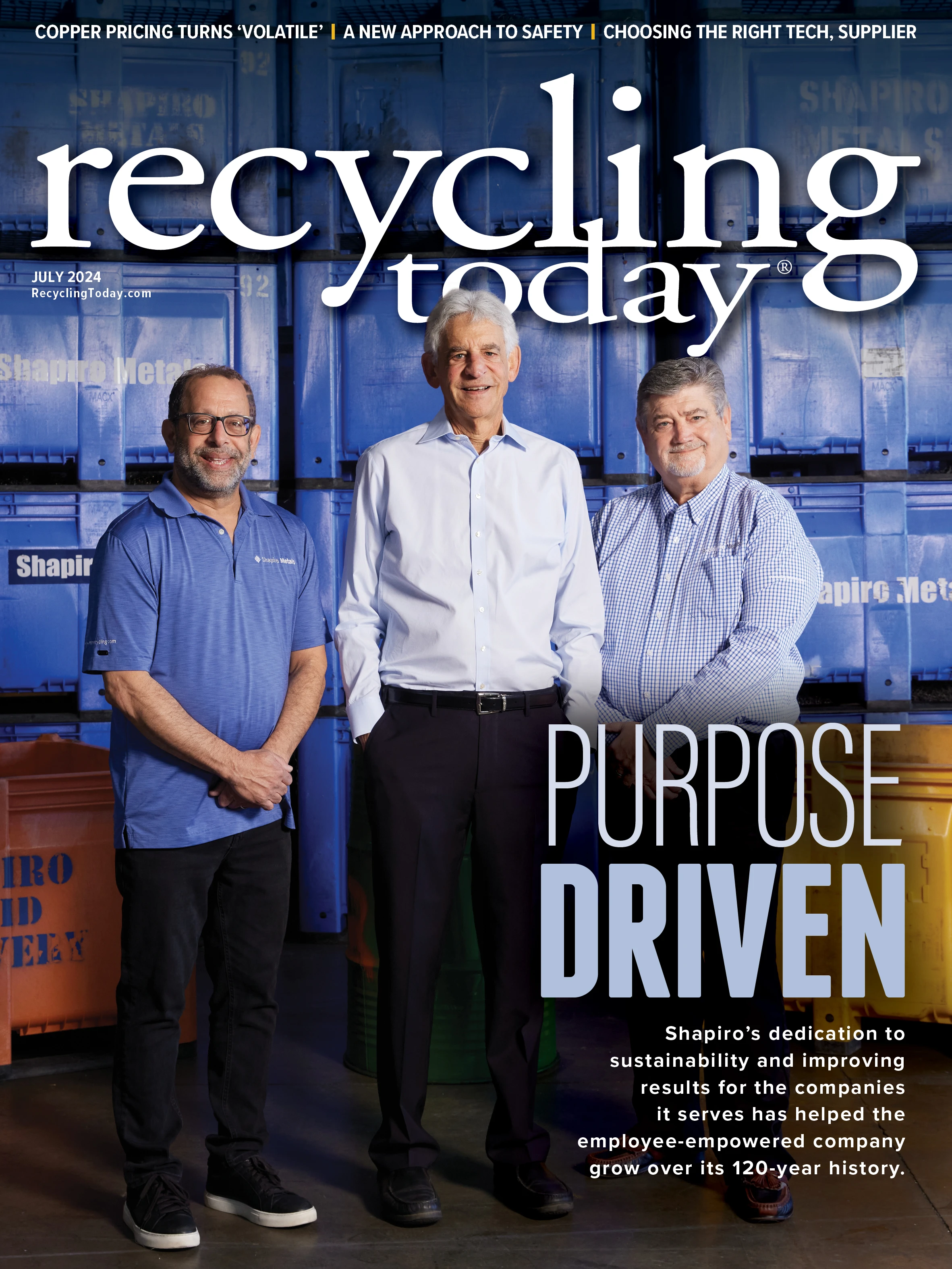
The quality of finished steel and iron produced worldwide is tied to the specific chemistry—including trace amounts of metals other than iron—found in feedstock introduced to melt shop furnaces.
For that reason, operators of electric arc furnace (EAF) steel mills and iron foundries that rely predominantly on recycled scrap content work closely with suppliers to measure and minimize the amount of copper in their inbound shipments.
Shredding plant operators handle the volume of scrap iron and steel needed by melt shops, but they also face the challenge of maintaining strict low-copper percentages in the shredded product they make, according to Mike Shattuck, market manager-recycling at Eriez.
At least one EAF steelmaker in the United States has committed resources to acquire clean ferrous shred to help it make high recycled-content, low carbon-footprint sheet steel valued by the automotive industry. However, the same clean shred is being pursued by other steelmakers and foundry operators in the United States and in leading ferrous scrap export markets.
The challenges and market incentives to produce low-copper shred are not new, and technology and equipment provider Eriez has been a leader for decades in helping operators overcome challenges and earn the rewards.
“There is no question that [steel] mills are seeking out preferred suppliers who pay attention to their shred’s chemistry.”
Shattuck says mill buyers have access to materials other than ferrous shred to feed their furnaces, but clean, low-copper shred remains a strong industry preference.
“Reducing copper in shred allows steel mills to use more low-dollar shredded scrap and less prime scrap, direct-reduced iron (DRI), pig iron or other metallics in every melt,” Shattuck says, noting that using shred of suitable quality equates to “a huge saving” for steel mills.
The use of Eriez equipment provides a reputation of reliability onto a plant operator whose ferrous shred tests in a consistent low-copper range when it arrives at a mill or foundry.
“Not only does the scrap contain a copper reduction, but the variability between the high- and low-copper content is reduced,” Shattuck says of using equipment such as the Eriez Shred1 ballistic separator. “This is a more consistent quality of scrap that is highly desired by steel mills.”
After scrap is shredded and passes above or below a strong drum magnet—such as the permanent magnet Eriez P-Rex with its industry-leading magnetic power—it still will contain mixed copper and iron materials, such as meatballs. When this stream heads to the Shred1, the machine is poised to provide a critical quality upgrade.
“The less magnetic material (copper-bearing debris, irony aluminum) is affected more by the ballistics of the high-speed belt than the attraction of the magnetic in the head pulley of the conveyor and is thrown over a splitter,” Shattuck says of the initial ferrous shred stream that hits the Shred1 ballistic separator.

The Shred1, introduced in 2011, has become a fixture at shredder yards where the object is to serve melt shops who measure and reward low-copper chemistry.
“This unit has been around for several years and has been successful at reducing copper in shredded scrap in more than 50 scrap yards worldwide,” Shattuck says.
After the noncopper fraction leaves the Shred1, but before it reaches any hand pickers, Eriez recommends the material pass beneath a scavenger drum. Such a drum, calibrated with a reduced magnetic field, serves to “cherry pick” the purest remaining ferrous material.
This fraction, typically about 10 percent to 15 percent of what the scavenger magnet sees, can be blended into the yard’s finished ferrous shred product to increase recovery of the low-copper shred and present less material in the picking line, thus reducing labor.
Shattuck cites numerous benefits of this downstream array, including increased automation, maximum recovery of ferrous scrap and the maximum recovery of copper-bearing materials such as motors and wire that also have end markets.
On that front, testing conducted earlier this decade by Eriez demonstrated not only that fewer pickers are needed using the Eriez process, but that those remaining can work more effectively.Copper picking in a more traditional setup, where a larger and deeper materials stream is presented, averages 5 pounds to 7 pounds of copper-bearing scrap picked per ton of ferrous shred. After installing the Shred1, workers on a picking line with less material average a harvest of 12 pounds to 14 pounds per ton of shred, Eriez discovered.
“The automated aspects of the Shred1 and properly placed drum magnets show up in a yard’s balance sheet.”
That was one of several key findings in a white paper Eriez published earlier this decade. Most of the other findings portray how low-copper ferrous shred can be produced and will be welcomed by the steel mill market.
“Some mills are now offering a premium for low-copper shred,” Shattuck says. “There is no question that those same mills and others are seeking out preferred suppliers who pay attention to their shred’s chemistry.”
The automated aspects of the Shred1 and properly placed drum magnets also show up in a yard’s balance sheet, according to Shattuck.
“The reduction in labor at shredder yards by having pickers only seeing 25 percent of the overall ferrous flow rather than the full 100 percent is significant,” he says.
Consumers of ferrous scrap are unlikely to step back from their increasing quality demands, Shattuck says, giving shredding plant operators considerable incentive to investigate the Eriez product line.
Descriptions of the Eriez product line for metal recyclers can be found at www.eriez.com/Recycling.
Get curated news on YOUR industry.
Enter your email to receive our newsletters.
Explore the July 2024 Issue
Check out more from this issue and find your next story to read.
